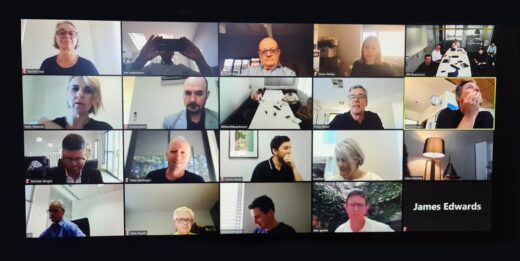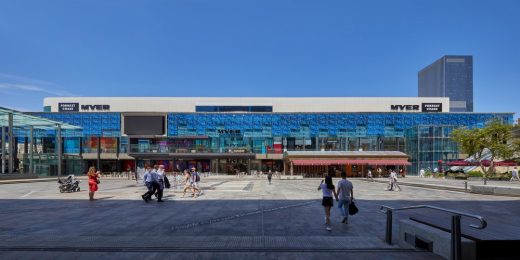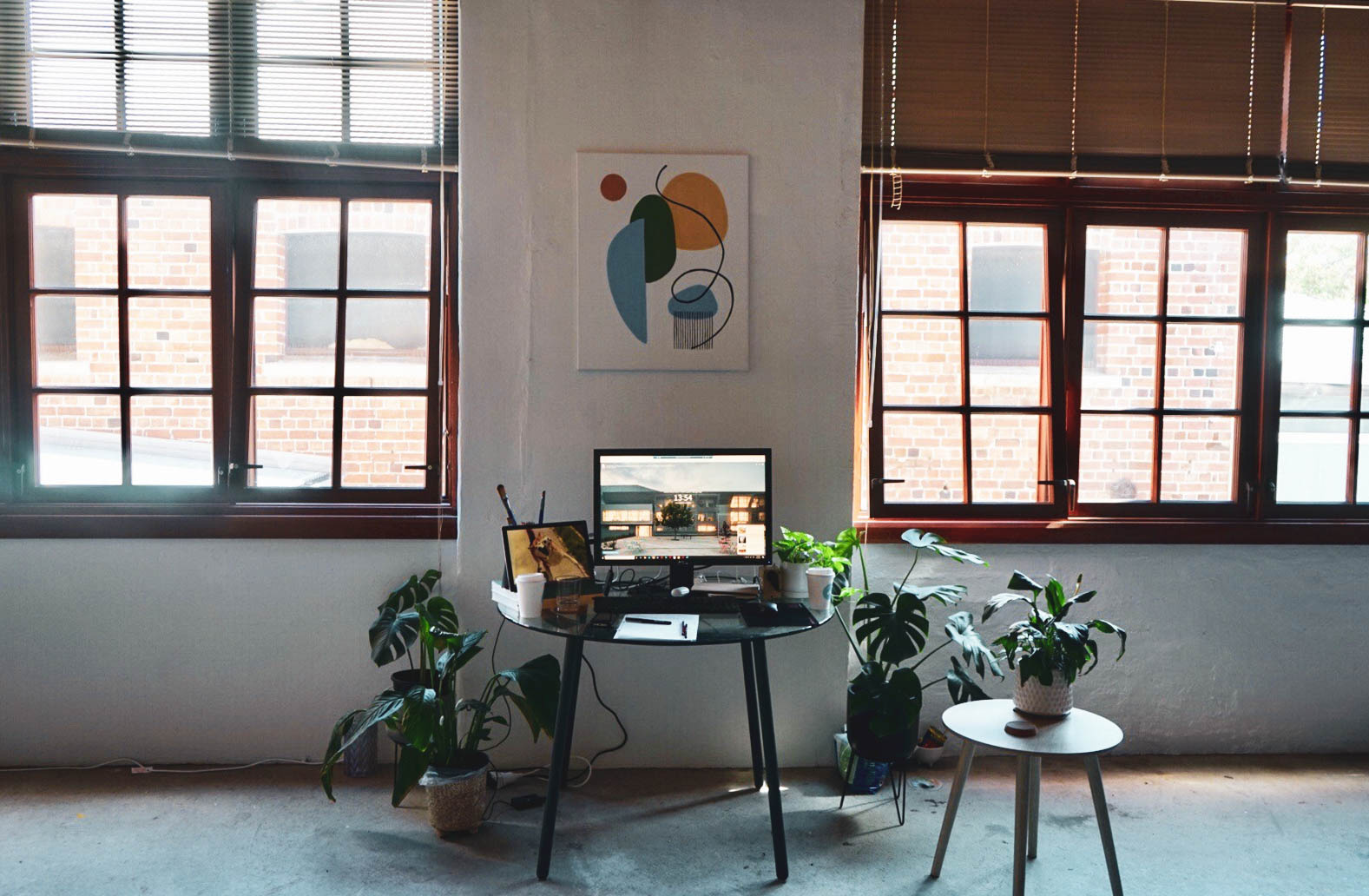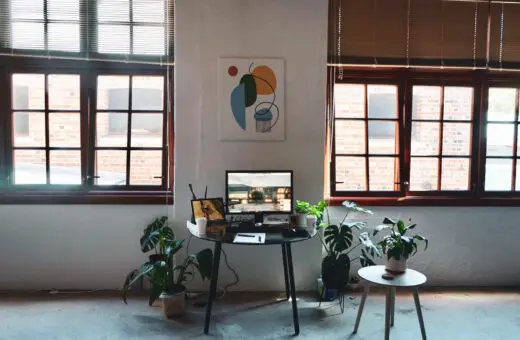Architects Coronavirus impact advice, COVID-19 office layout tips, WFH guide, Post-pandemic workspace design
How COVID-19 changes the way we work: Impact
23 Apr 2020
Hames Sharley Principal and Workplace Portfolio Leader Stephen Moorcroft discusses the impact of the coronavirus outbreak on the traditional workplace, and what we can learn from the experience.
COVID-19 Crisis Impact on Work Methods
The COVID-19 pandemic has literally changed the world, not least in the way we conduct business. But while it seems increasingly that the workplace may never be quite the same again, the lessons we can learn from how we have been forced to adapt have revealed a great many positives.
We changed – fast
The biggest lesson we’ve learned is that humans have a greater capacity to accept and adopt change than we might have expected. When significant cultural shift looms, some large workplace project teams have agonised over change management, developing year-long programmes to educate, trial, motivate and curate the behaviour of staff who are moving to a new environment. Recently, when faced with the absolute motivation of preventing a pandemic, nearly all businesses changed their operating model and went agile in under a week.
Everyone I speak to has concerns and frustrations, but the bottom line is that staff are operational in entirely new and unusual circumstances. The next time anyone claims change is not possible, those claims will be questioned, citing these times as a counter-argument.
Output measurement has just been enforced
Of course, some technologies could be employed to continue a culture of presenteeism remotely – media reports suggest some businesses are using them in much the same way the Singaporean government monitors the locations of its citizens. For most organisations, leaders are under pressure to communicate more clearly and more regularly, and to set understood and measurable output requirements. How, where, and when these outputs are delivered has become much less important.
‘Focus’ is being redefined
I have argued for years that, for many, the ability to focus is simply about being removed from typical ongoing distractions. The old café-working culture was never about seeking quiet; it was about escaping constant interruption from colleagues. Back then, working from an empty home used to be incredibly productive, but now the need to get away from the immediate team has become the need to get away from the immediate family. For many, home is now a place to constantly address other peoples’ needs (and ‘needs’). As the image flying around on LinkedIn explains, this isn’t working 9 – 5; it’s 9:00 – 9:10, 9:17 – 9:25… And don’t forget that great stat that it takes 23 minutes to refocus after an interruption.
As a result of this, our understanding and appreciation for the ability to focus will change. We will all get better at working with disruption, and we should have a stronger appreciation that quality work needs to happen within limited periods of available time. ‘Done’ may indeed be better than perfect, and most work could move towards an execution or transactional mindset.
Structure could go either way
Pre-COVID-19, there was a slow shift towards less structured working, and an increasing emphasis on informal and incidental meetings and knowledge sharing. Now, different personalities in different circumstances are handling this…well, differently.
- Most of us now have much more to do in the same amount of time.
- Incidental physical meetings are over for now, and any remaining physical meetings have strict formal limitations.
- For many, the ability to communicate at any time by a variety of means has become extremely simple, and has the potential to be highly disruptive. Rejecting a call or a Zoom meeting seems ruder than explaining to a passing colleague that you are very busy and will get back to them. As such, technology could be more intrusive.
- For others, structure and negotiation of time just became hypercritical. There are the windows of time that are mutually agreeable for newly remote colleagues to meet virtually, without pets and children featuring in essential conversations. Similarly, there are times when one parent needs to clear the household or entertain children so the other parent can address something important. There are times when quality work can be close to guaranteed and times when it is absolutely off the cards.
All of these factors may mean some us switch to using set bands of time to perform specific tasks, a methodology already employed by many high-performing leaders.
Personalisation is back and respect will grow
A frequent concern with agile workplaces is the lack of personalisation. How that’s changed! We are now working in environments we theoretically control: spaces we have chosen to buy, rent, share, and decorate. Few people I speak to really enjoy this, however. Many want to get back to the office because they appreciate the completely different, usually more corporate environment as a signal for different behaviours, from themselves and from others.
At the same time, our need to share details of our personal lives has never been greater – generally to create understanding of time management and also to compensate for our lack of physical proximity. Oddly, in isolation we’re learning more about each other. We’re seeing snapshots of each other’s homes, hearing domestic chores, meeting families, and all of that is starting conversations that may not have happened otherwise.
With more knowledge and understanding of our diverse circumstances, we should take a greater respect for our colleagues into the future.
We love technology (or at least appreciate it)
Every organisation now loves its IT team, for having resilience built into existing systems, for having enough laptops to go around (or the ability to order a lot of them very quickly), and for executing and troubleshooting in a very short period a new working model wholly reliant on technology.
- We are having to learn new software.
- Many of us are unintentionally becoming paperless – without access to a printer, we have no choice.
- We all have a far better understanding of ‘the Cloud’ and it’s doubtful we’d want to live without it now.
- We all have the same number of communication methods as any control centre or trading floor. With the exception of standing up and shouting to our colleagues (respectively, the last resort and the first resort in those two examples) we can all now telephone, text, instant message, email, Zoom, Skype, FaceTime, Blue Jeans, Yammer, Slack, chat on Teams, and message on LinkedIn… The choice is overwhelming and many of these technologies are relatively new. Five years ago, this pandemic could have caused far more severe communications challenges.
Travel will reduce
To stay successful, we’re going to have to prove business travel is largely unnecessary. Everyone appreciates meeting face-to-face, but now video-conference (VC) technology has become increasingly cheap and high-quality.
Telepresence remains expensive and is the only technology I believe is good enough to truly support the most important initial contact, as an alternative to meeting in person. For years, it’s been largely held by global finance and resource firms. Sustainability is often given as a reason such organisations employ it, but the real reason is speed: speed of news to market and speed to manage disaster.
The reality now is we all have VC on our phone and on our computer, and the quality is often good enough for any everyday conversation. Ironically, between familiar people, VC can be better because there is increased pressure to pay attention, compared to meeting in person.
We will continue to want to gather, to meet potential clients, to see and understand new locations. Travel, however, will become harder to justify.
Was the agile workplace ready?
Arguably agile or activity based workplaces (ABW) were better prepared for the effects of the pandemic. They should have embraced trust culture, output measurement, agile technology and work-anywhere structure, and already had in place a better understanding of what everyone generally does.
One silver lining of the current situation came last week when an old client, who has been in an ABW environment for the last two years, declared a leadership that had been clinging to old behaviours now simply had to embrace change. And so it may be for many others. This particular organisation went fully mobile on technology and hard on change-management until the day they moved…and then they stopped. The need for ongoing curation of space and management of behaviours was clear.
The second surprise was the leadership’s reaction to hygiene. Staff had been expressing concern over desk sharing, and just as I wondered what challenge could be thrown in our path next, our most senior stakeholder made the point that with a clean-desk policy the new workplace was the tidiest, most regularly and thoroughly cleaned office space she had ever seen.
What’s next?
It’s clear the physical workplace will change, having to support people who have lived through a giant workplace experiment and bringing their new experience alongside new demands to their point of designed congregation. The slow shift over recent years to greater agility and greater choice will be amplified and accelerated as we will have proven greater extremity in how, when and where we work and the arguments against change will have been substantially eroded.
- We will all be better skilled in technology, communication, delegation, clarity, and time management. Some of us will still value personal interaction highly, others will convert fully to a virtual world.
- We should become more respectful of time – ours and our colleagues’ – and the work we do.
- How and when we collaborate, its true value and its purpose will all be challenged. Place will become desperately important for any organisation seeking to unite its people.
- The individual and the specialist will rise. Without the group location and forced mentality, some individuals will thrive and emerge as internal or external leaders. Specialist groups will emerge from large corporates, and space for smaller organisations and new partnerships, including incubators, is likely to be required.
- Convenience and personalisation of space will, at some level, be appreciated. The ‘hub and spoke’ model used by larger companies will become more normal in more places, as staff choose to work from home or the most convenient location available when they don’t specifically need to travel to their traditional location.
- Every workplace strategist has discussed the intrinsic connection between physical space, culture and technology. Technology and technology teams have excelled, culture is currently keeping us together or driving us apart, and the physical group workplace has been temporarily stood down. Never has the argument been stronger for an agile workplace with alternative environments and atmospheres to cater for different personalities and task needs. We will slowly return to our place of work having been used to working flexible hours and having made the best of working in whatever suitable location our home can provide. Whilst often challenging, these experiences will have certainly been individual.
- For years I’ve discussed how the future workplace has to be a destination. It must offer something people cannot get elsewhere, be that technology, scale, facility or the ability to meet. I still believe this to be true but the range must now increase dramatically to take account of the fact we will have worked successfully in very different ways for some time. The successes of that experience for each and every individual will need to be understood and improved upon.
24 Mar 2020
Doing your homework on working remote
Show everyone who’s boss
Hames Sharley employees during a Zoom meeting:

Hames Sharley’s response to COVID-19 virus.
Forrest Chase Perth Shopping Centre by Hames Sharley Architecture, Urban & Interior Design:

photograph : Douglas Mark Black
24 March 2020
RMJM Database for Quarantined Architects
March 2020
Coronavirus Impact
The impact of coronavirus on the property market
Coronavirus on the property market
Coronavirus (COVID-19): UK government response.
Comments / photos for the How COVID-19 changes the way we work – Coronavirus Impact for Offices page welcome




